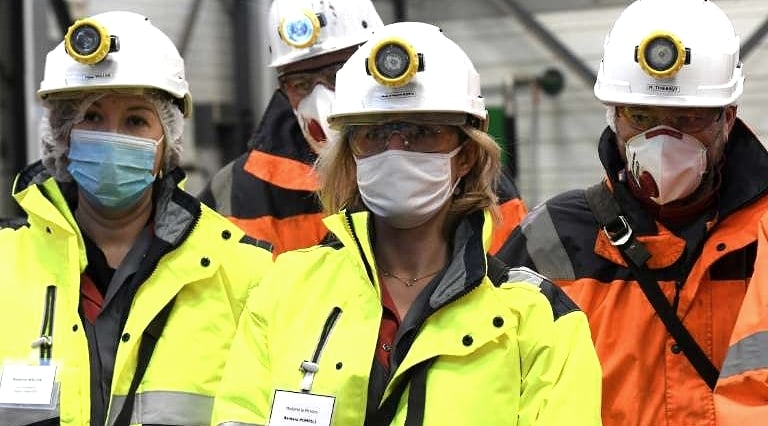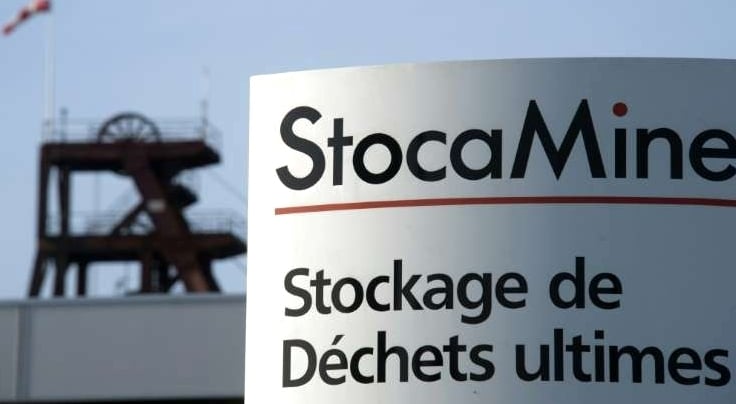
By Adam PLOWRIGHT
WITTELSHEIM, France (AFP) — Jean-Pierre Hecht, a miner in eastern France, remembers how attractive the idea sounded when he first heard about it: a dying pit could be turned into something useful and environmentally friendly.
Back in the 1990s, the local state mining group MDPA approached the community in the town of Wittelsheim in Alsace with an idea for stocking hazardous waste in a nearby potash mine.
"The pitch was all about how we were going to store the waste, hoping to see some research institute one day come up with a way to neutralise it permanently," Hecht told AFP.
But the project, known as Stocamine, ended up poisoning local community relations, led to court cases, convictions and fears that it has resulted in the creation of a toxic timebomb beneath the surface.
It serves as a warning about what can go wrong when countries decide to repurpose mines to bury their most undesirable and hazardous waste for which no recycling or treatment technology exists.
Hecht, now retired, regrets accepting a job supervising work there due to the legacy for future generations.
"It's a question not only of being able to look at yourself in the mirror, but also being able to look at your children in the eyes," he said, grimacing in a cold wind near the perimeter of the site.
He, along with the local mayor and many of the 10,000 residents, were left bitterly disappointed at the end of January when the Paris government decided to seal the contents of Stocamine in the ground.
"They've handed us the title permanently of 'the least glamourous town in the whole of Alsace," lamented mayor Yves Goepfert.

Misleading claim
Stocamine has been a fiasco for the people of Wittelsheim, a mining town surrounded by defunct pits and grassed over slag heaps, signs of a industry that once sustained 15,000 jobs at its height.
Potash is the local mineral, which was first found in the early 1900s when it was in demand for fertilizers.
This boom was a distant memory by the time brochures for Stocamine began circulating in the 1990s, promising jobs and a "mine at the service of the environment" which would use the thick layers of salt locally like protective blankets around the waste.
The facility won authorisation in 1997 for 30 years on the condition that it was "reversible" — which most people took to mean that the 320,000 tonnes of permitted non-radioactive waste might one day be taken out.
"Acceptance of the project by the population was based in a significant way on the commitment by the state to a reversible storage facility," a 2018 parliamentary inquiry report concluded.
Over the three years after its opening in 1999, a total of 44,000 tonnes of waste were brought down in barrels and reinforced bags which were piled up in freshly dug galleries 550 metres (1,800 feet) below the surface.
'Safest environment'
The foul-smelling containers were filled with discharge from incineration plants, byproducts from scientific laboratories, chroming and galvanization plants, as well as waste containing asbestos and mercury.
Yann Flory, spokesman for Destocamine, a local environmental group, believes underground storage facilities are a way for society to hide from the problem of this so-called "final waste".
"We found a quick solution: we put it in holes in the ground," he told AFP. But, as would later emerge in court, the company in charge of the site — a joint venture between MDPA and private waste group Seche Environnement – committed criminal errors.
Waste was not checked or filtered properly and in 2002 a fire broke out underground, which took firefighters two months to extinguish.
The chief executive of Stocamine and the company were convicted in 2007 of endangering lives by deliberately breaking the terms of the project's authorisation.
As the project ground to a halt, local lawmakers and activists lobbied for a complete clean-up, arguing that toxic sludge could make its way into the Alsace aquifer, one of the largest in Europe.
Although the mine is far below the watercourse, they remain worried about infiltration and flooding in the galleries.
"We should get everything out," Flory told AFP.
From 2014, around 2,000 tonnes of mercury-laced waste, considered particularly high-risk, were removed, but environment minister Barbara Pompelii recently dashed hopes of more extraction.
She has dismissed risks of groundwater pollution as "infinitesimal" and on January 18 she ended decades of delay by announcing that the remaining waste would be buried permanently.
The mine will be sealed, a pollution surveillance system put in place, and 50 million euros (60 million dollars) will be spent in the next five years to clean up other sources of water pollution in Alsace.
She has called permanent burial "the safest for the environment and workers".

'Different awareness'
Since the fire at Stocamine, France has nowhere to store its "final waste", meaning it is sent over the border to be deposited in German mines, said Marcos Buser, a Swiss geologist and waste expert.
Germany has around a dozen such facilities, mostly disused potash and salt mines, according to Buser, a former member of Switzerland's Nuclear Safety Commission and a dissenting technical expert consulted about Stocamine.
He says several German facilities are a pollution worry, notably a former salt mine filled with radioactive waste in Asse, central Germany, and another in Heilbronn, north of Stuttgart.
Using mines can be safe providing the highest standards are respected, he says, but he believes they pose questions about our responsibilities towards future generations.
"If you go back in the past, in the 1940s-60s, our final waste was simply dumped in the sea. No one thought it would be a problem," he said.
"I think the same thing will happen with dumps in salt mines. Nowadays no one is interested, but wait another 50 years. Or maybe before."
ADVERTISEMENT
ADVERTISEMENT

































